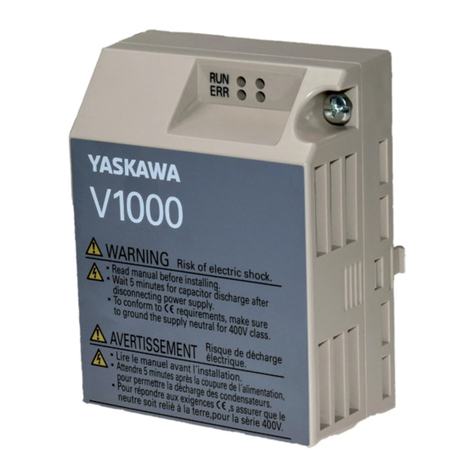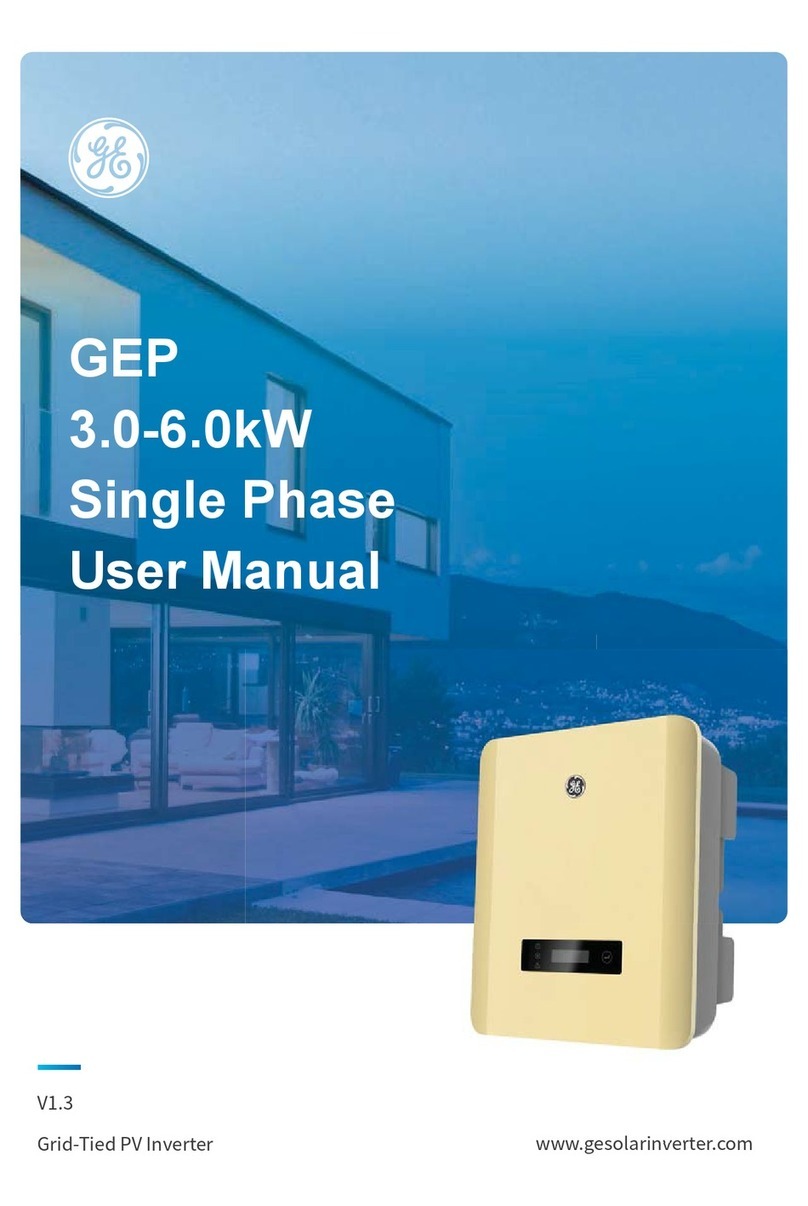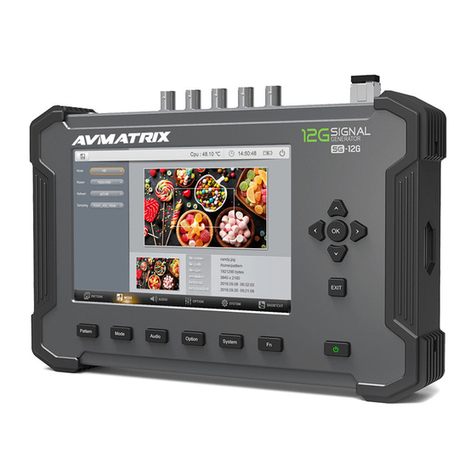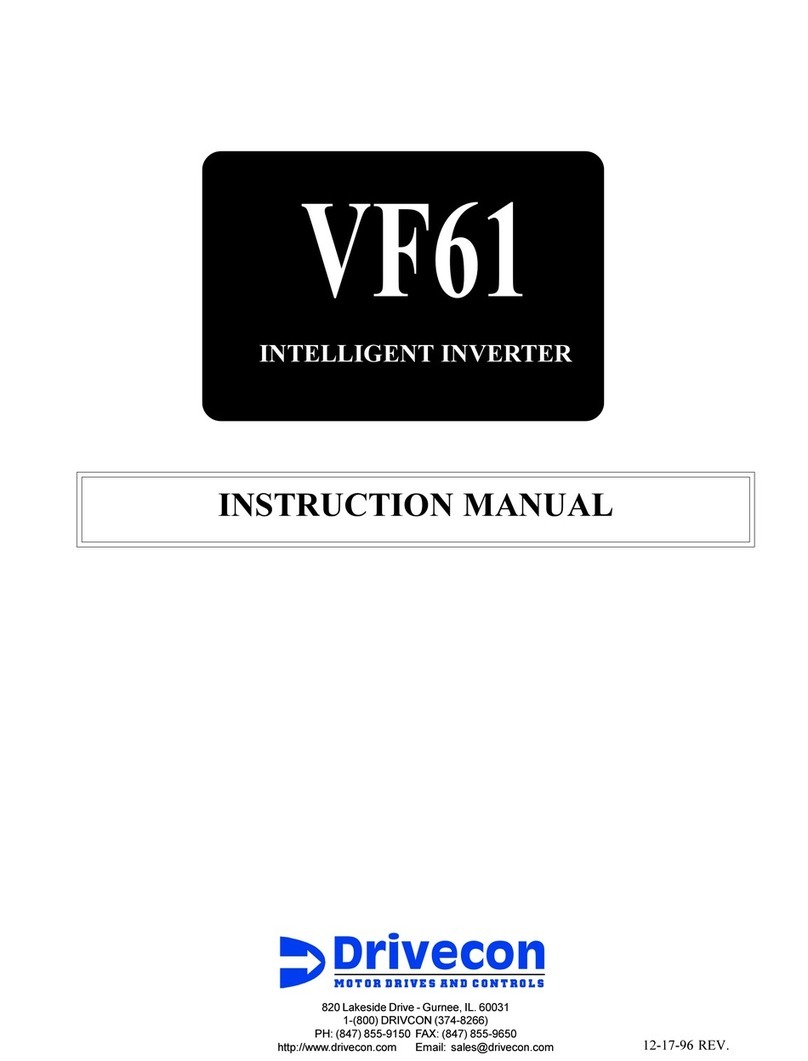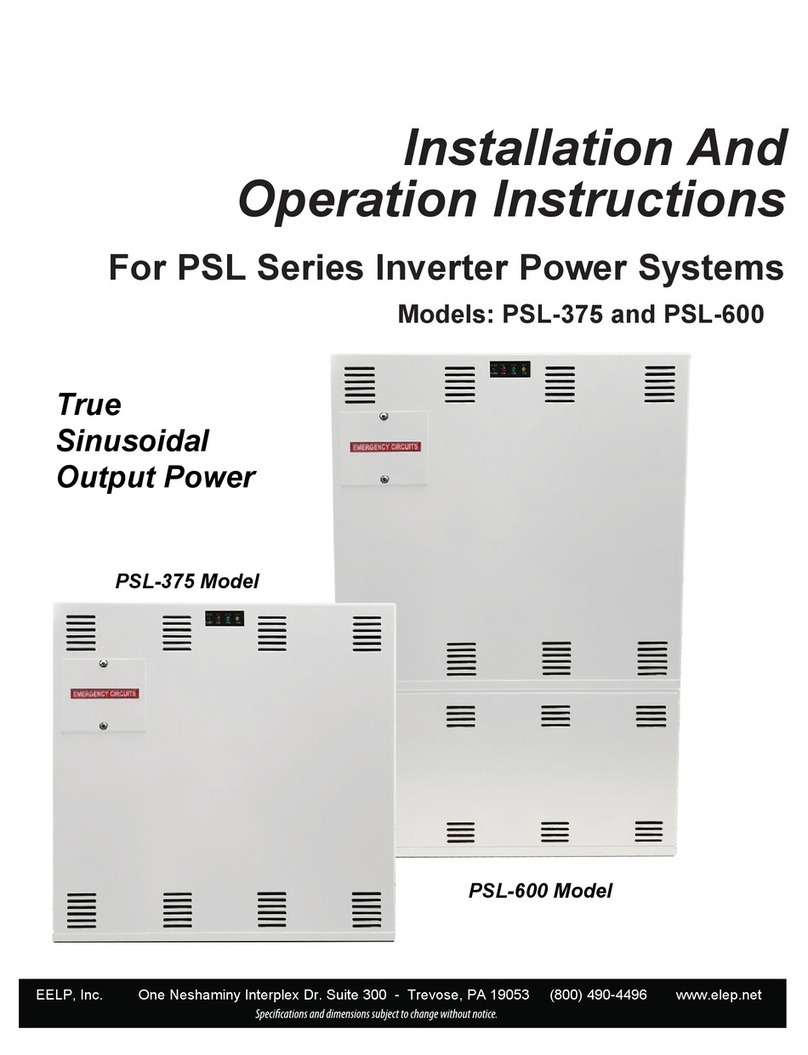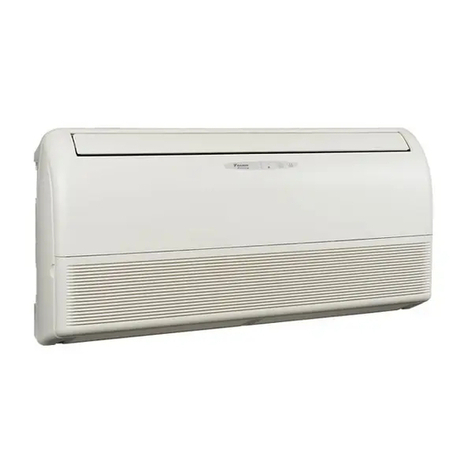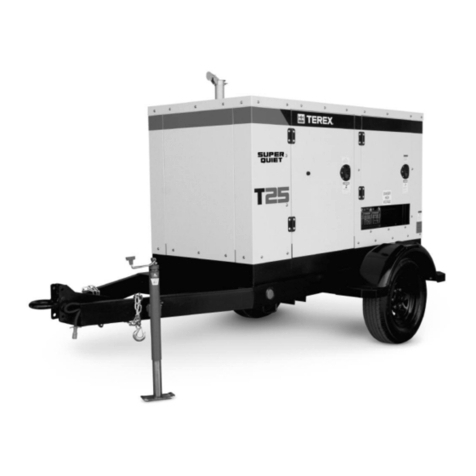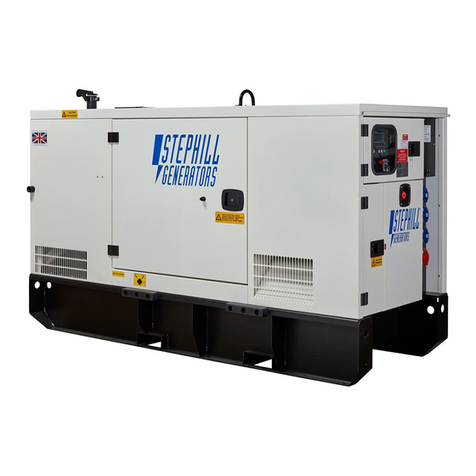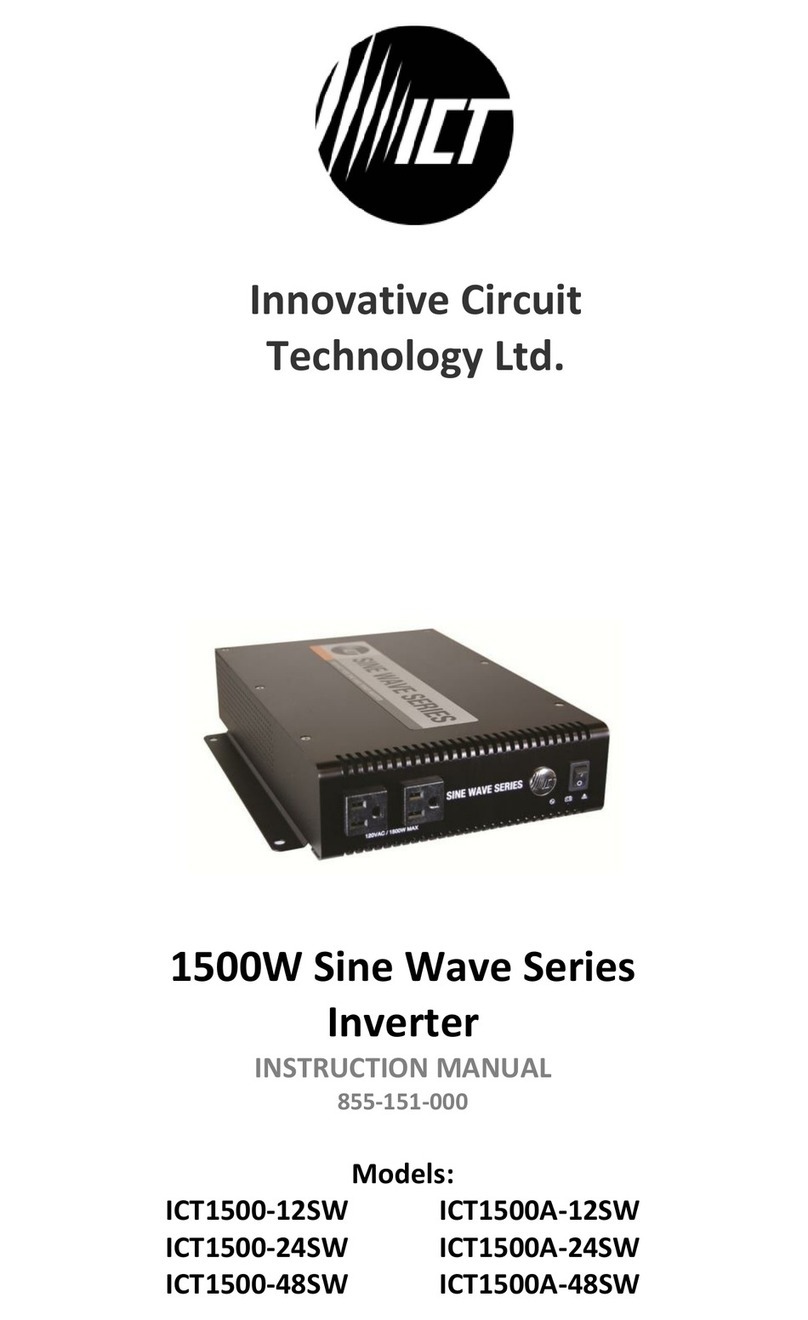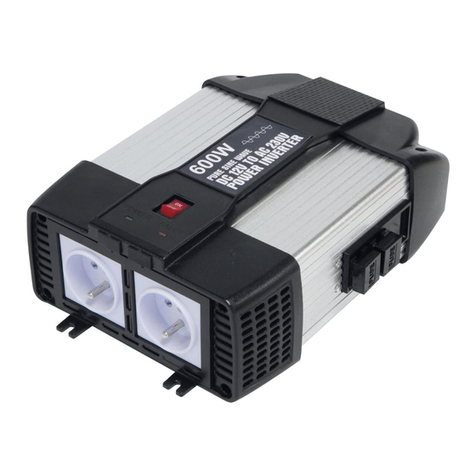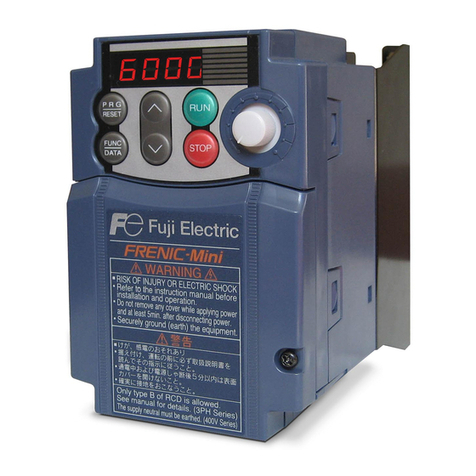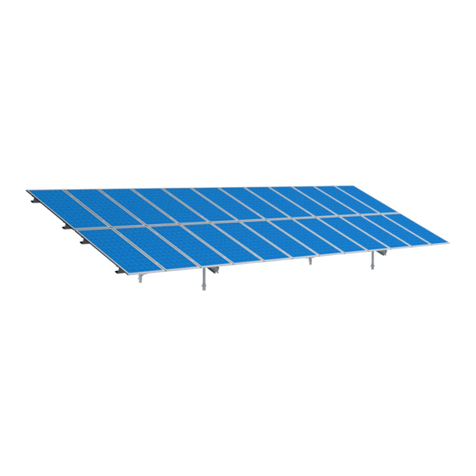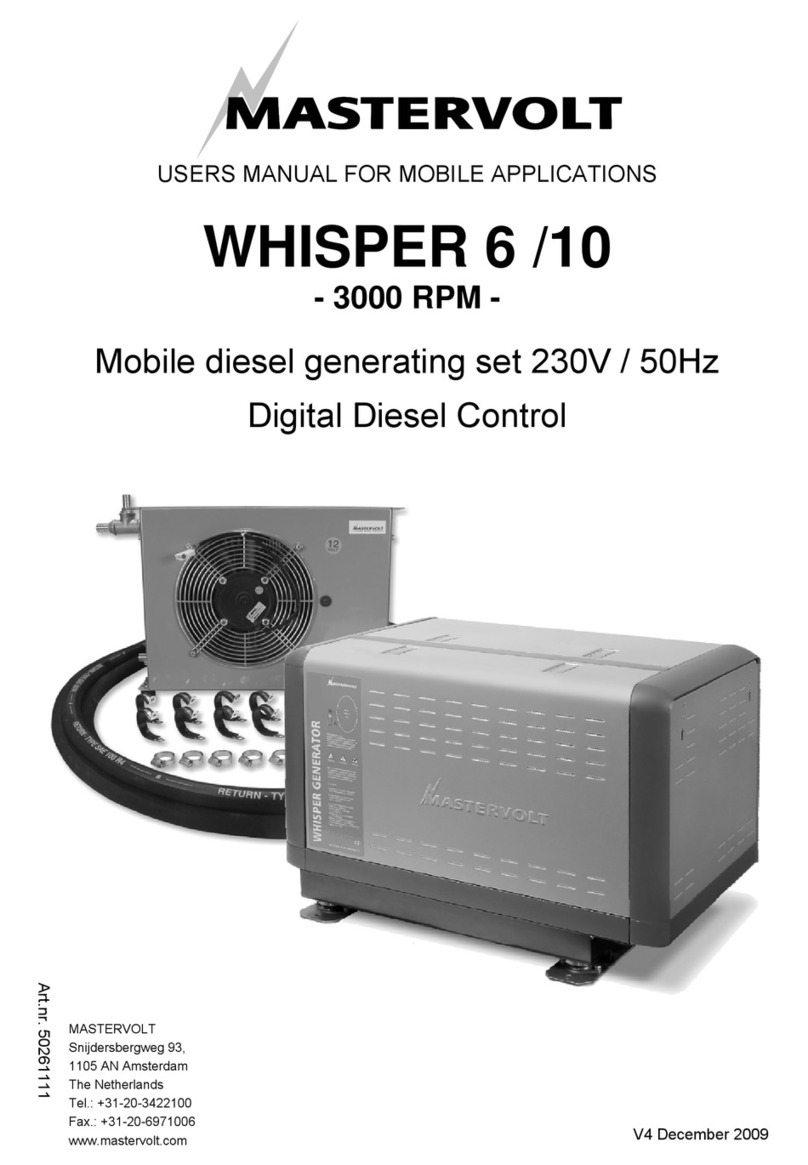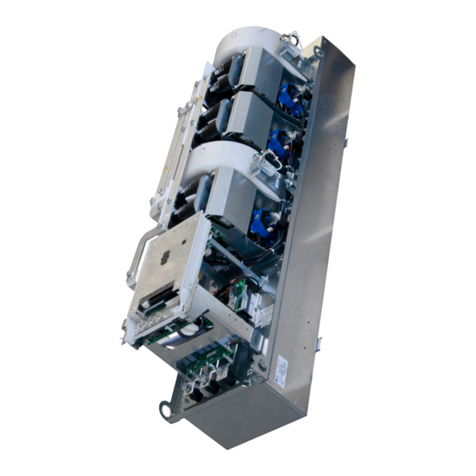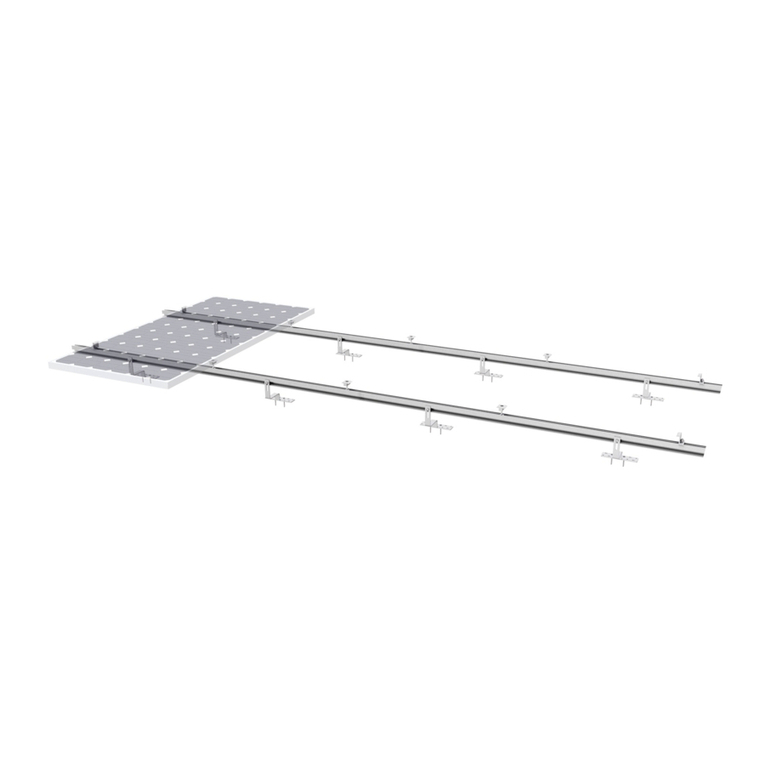AE Conversion INV250-45US RS485 User manual

Micro-Inverter
English
Installation-Manual
INV250-45US RS485
INV250-45US PLC
INV250-45US
INV350-60US RS485
INV350-60US PLC
INV350-60US
INV500-90US RS485
INV500-90US PLC
INV500-90US

Installation and Operation Manual for
INV250-45US RS485, INV250-45US PLC and INV250-45US
INV350-60US RS485, INV350-60US PLC and INV350-60US
INV500-90US RS485, INV500-90US PLC and INV500-90US
CONTACT INFORMATION
AEconversion GmbH & Co. KG
Geseker Str. 3
D-59494 Soest
Germany
http://www.aeconversion.com
info@aeconversion.com
OTHER INFORMATION
Product information is subject to change without notice.
All trademarks are recognized as the property of their respective owners.
Copyright © 2012 AEconversion GmbH & Co. KG. All rights reserved.
IMPORTANT SAFETY INSTRUCTIONS
SAVE THESE INSTRUCTIONS
THIS MANUAL CONTAINS IMPORTANT
INSTRUCTIONS FOR MODELS:
INV25045US, INV25045US PLC AND INV25045US RS485,
INV35060US, INV35060US PLC AND INV35060US RS485,
INV50090US, INV50090US PLC AND INV50090US RS485,
THAT SHALL BE FOLLOWED DURING INSTALLATION
AND MAINTENANCE OF THE MICROINVERTER.

3INV250-45US / INV350-60US / INV500-90US05.2014
Table of Contents
1.0 About this Manual 4
1.1 Important Safety Information 4
1.2 Scope 5
1.3 Target Audience 5
2.0 Storage and Transportation 5
2.1 Assembly, Installation, Operation and
Maintenance 5
2.2 Label 5
3.0 Notes on Liability, Warranty and Service 5
3.1 Guaranty and Warranty 5
3.2 Intended use and liability 6
3.3 Service 6
4.0 Product Description 6
4.1 Scope of Delivery 7
4.2 Dimensions 7
4.3 LED-Display 7
4.4 Protection Concepts 7
4.4.1 Network and System Protection 8
4.5 Derating 8
4.5.1 Derating as a function of input voltage 8
4.5.2 Derating as a function of ambient temp. /
wind speed 8
4.6 Connections Overview 8
4.6.1 Connections of PLC and NoCom Devices 8
4.6.2 Connections of RS485 Devices 9
5.0 Micro-Inverter Pre-Installation 9
5.1 Dimensioning of the PV-Generators 9
5.2 Compatibility and Capacity 10
5.3 Parts and Tools Required 10
5.4 Lighting Surge Protection 10
6.0 Installation Procedure 10
6.1 Measure AC at the Electrical Utility Connection 10
6.2 Install the AC Branch Circuit Junction Box 10
6.3 Attach the Micro-Inverter to the PV Racking 11
6.4 Connect the Micro-Inverters (AC-Connection) 12
6.4.1 AC-Connection of PLC and NoCom Devices 12
6.4.2 AC-Connection of RS485 Devices 13
6.5 Ground the System 13
6.6 Communication Set-up 13
6.6.1 RS-485 Communication 13
6.6.2 Powerline Communication 14
6.6.3 Without Communication 14
6.7 Complete the Installation Map 14
6.8 Connect the PV Modules 15
6.9 Start Software 15
7.0 Commissioning, Operation and Registration 15
7.1 Commissioning 16
7.2 Registering with Utility Company 16
8.0 Troubleshooting 16
8.1 Troubleshooting an Inoperable Micro-Inverter 16
8.2 Other Faults 16
8.3 Disconnecting a Micro-Inverter from the
PV Module 17
8.4 Installing a Replacement Micro-Inverter 17
9.0 Further Information 17
9.1 Disposal 17
9.2 Care 17
9.3 Laws, Regulations and Technical Rules 17
Appendix
Technical Data for INV250 18
Technical Data for INV350 19
Technical Data for INV500 20
Derating Diagrams for INV250 21
Derating Diagrams for INV350 22
Derating Diagrams for INV500 23
Certicate 25
Installation Map 26
Wiring Diagrams 208V 27
Wiring Diagrams 240V 28

4INV250-45US / INV350-60US / INV500-90US 05.2014
1.0 About this Manual
This manual describes important information to follow
during the installation and service of the AEconversion
Micro-Inverter. These instructions should always be
kept within reach of the inverter.
Since the documentation is updated frequently, please
visit the AEconversion website (www.aeconversion.
com/) for the latest information.
1.1 Important Safety Information
To ensure the safe installation and service of the
AEconversion Micro-Inverter, this manual uses the
following types of safety symbols to indicate dangerous
conditions and important safety instructions that are to
be noted:
WARNING!
This indicates a situation where failure to follow
instructions may be a safety hazard or cause equipment
malfunction. Use extreme caution and follow
instructions carefully.
NOTE: This indicates information particularly important
for optimal system operation. Follow instructions
closely.
Symbols to be noted:
Direct Current Supply Symbol:
Alternating Current
Supply Symbol:
Safety Instructions:
• Before installing the AEconversion Micro-Inverter,
please read all instructions and cautionary
markings in the technical documentation, about
the AEconversion Micro-Inverter System and the PV
equipment.
• CAUTION: Perform all electrical installations in
accordance with all applicable local electrical codes
and the National Electrical Code (NEC), ANSI/NFPA
70.
• Be aware that only qualied personnel should
install or replace AEconversion Micro-Inverters.
• Do not attempt to repair the AEconversion Micro-
Inverter; it contains no user-serviceable parts.
Tampering with or opening the AEconversion
Micro-Inverter will void the warranty.
• WARNING:
Be aware that the body of the AEconversion Micro-
Inverter can become very hot. The body can reach
temperatures over 70°C (158°F), when the ambient
temperature exceeds 25°C (77°F). To reduce risk
of burns, use caution when working with Micro-
Inverters.
• Do NOT disconnect the PV module from the
AEconversion Micro-Inverter without rst removing
AC power.
• The installation instructions shall indicate that the
wiring methods used shall be in accordance with
the Canadian Electrical Code, Part I.
• The PV array is not allowed to be earthed!
The micro inverter converts the power generated by
the PV modules from direct current into grid compliant
alternating current. For damages resulting from failure
to follow these instructions, we assume no liability.
When installing the inverter, please note the following
instructions for all assemblies and components of the
IMPORTANT SAFETY INSTRUCTIONS
SAVE THESE INSTRUCTIONS
THIS MANUAL CONTAINS IMPORTANT INSTRUCTIONS
FOR MODELS:
INV25045US, INV25045US PLC AND INV25045US RS485,
INV35060US, INV35060US PLC AND INV35060US RS485,
INV50090US, INV50090US PLC AND INV50090US RS485,
THAT SHALL BE FOLLOWED DURING INSTALLATION
AND MAINTENANCE OF THE MICROINVERTER.
Ground Symbol:

5INV250-45US / INV350-60US / INV500-90US05.2014
safe operation.
• Never remove the solar generator from the inverter,
while it is connected to the electricity network.
• Make sure that before carrying out inspections and
maintenance, the inverter is disconnected from the
mains supply and is secured against restarting.
• CAUTION:
Perform all electrical installations in accordance
with the safety regulations all applicable local
electrical codes and the National Electrical Code
(NEC), ANSI/NFPA 70.
• Connect the AEconversion Micro-Inverter to
the electricity network only after receiving prior
approval from the electrical utility company.
• The electrical connection to the central building
shall be performed only by a licensed electrician.
• If you mount the inverter at high altitude, avoid
possible falling risks.
• Do not plug electrically conductive parts into the
plugs and sockets! Tools and working conditions
must be dry.
• Do not under any circumstances interfere with or
manipulate the inverter or any other parts of the
system; it contains no user-serviceable parts.
• Inappropriate alterations can cause damage!
• Tampering with or opening the AEconversion
Micro-Inverter will void the warranty.
• The installation shall be done in accordance to the
wiring methods and wire diameters in accordance
with the National Electrical Code (NEC), ANSI/NFPA
70. Connection schemes refer also page 27 and 28.
• NOTE:
Do not connect the inverter to grids without an
earthed neutral conductor.
• The installation instructions shall indicate that the
wiring methods used shall be in accordance with
the Canadian Electrical Code, Part I.
2.2 Label
The label is located on the top side of the inverter.
The information on the label includes technical data,
type and serial number of the device as well as safety
instructions.
CAUTION:
Note that surfaces of equipment may be hot and create
a burn hazard.
3.0 Notes on Liability, Warranty and Service
Remarks on liability, warranty and service are listed
hereafter.
3.1 Guaranty and Warranty
AEconversion grants an implied warranty of 2 years
to the inverter from date of purchase. Furthermore,
AEconversion provides an additional limited warranty.
system.
In order to ensure faultless and safe operation of
this equipment, proper transport, expert storage,
installation, operation and maintenance is required.
During the operation of this equipment, certain
equipment parts carry hazardous voltages that can
cause serious injury or death. Always follow the
following instructions to minimize the risk of injury or
death.
1.2 Scope
This manual applies to the following micro-inverters:
• INV250-45US
• INV250-45US RS485
• INV250-45US PLC
• INV350-60US
• INV350-60US RS485
• INV350-60US PLC
• INV500-90US
• INV500-90US RS485
• INV500-90US PLC
1.3 Target Audience
This manual is for the installer of the types of inverters
listed in 1.2.
NOTE:
This guide assumes knowledge corresponding to a
recognized professional qualication as an electrician
and only qualied personnel should install or replace
AEconversion Micro Inverters.
WARNING!
These servicing instructions are for use by qualied
personnel only. To reduce the risk of electric shock, do
not perform any servicing other than that specied in
the operating instructions unless you are qualied to
do so.
2.0 Storage and Transportation
For storage and transport, the following warnings are to
be noted:
• All contacts should be kept dry and clean!
• Transport the inverter only in the given packaging.
2.1 Assembly, Installation, Operation and Maintenance
The following warnings must be observed:
• Before installing or using the AEconversion Micro-
Inverter, please read all instructions and note the
threats, warnings, and precautions.
• WARNING!
Proper grounding, wire sizing and appropriate
short-circuit protection must be provided to ensure

6INV250-45US / INV350-60US / INV500-90US 05.2014
For warranty questions, please see our warranty
disclaimer or contact your retailer or installer. If your
device has a defect or malfunction during the warranty
period, please also contact your retailer or installer.
Warranty claims are excluded for:
• alterations or repairs to the unit
• opening of the inverter, for example by unscrewing
the cover
• improper use of device
• improper and non-standard installation
• improper operation
• operating the equipment with defective safety
devices
• impact of foreign objects and force majeure
(lightning, surge, storm, re)
• inadequate or nonexistent ventilation of the device
• disregarding of safety regulations
• shipping damage
3.2 Intended use and liability
The AEconversion Micro-Inverter converts the power
generated by the PV modules from direct current into
grid compliant alternating current and supplies it to the
power network.
Any other or additional use is considered improper.
The manufacturer / supplier shall not be liable for any
resulting damages. The risk is carried solely by the
operator.
Intended use also includes compliance with the
instructions and installation manual. Some of the
documents that you need for the registration and
inspection of your photovoltaic system are included
in the installation instructions. The inverter can be
operated with a permanent connection to the power
network. The inverter is not designed for mobile use.
Changes to the inverter are generally prohibited. For
any changes in the system a qualied electrician must
be called in.
3.3 Service
We have already set high standards in the development
phase on the quality and longevity of the inverter. In
spite of all quality assurance activities, disturbances
may occur in exceptional cases. In these cases, you will
get the maximum possible support to eliminate the
problem quickly and without bureaucratic complexities.
Please contact our service department directly.
AEconversion Service:
+49 (0) 521 329471-0 / info@aeconversion.de
In order for the service department to respond quickly
and correctly, the following information is absolutely
necessary.
1) Details of the inverter:
Product description, type and serial number of the
inverter; this information can be found on the label on
the device.
Short description of the error:
• Did the fault occur immediately at the start or at a
later time?
• Is the fault is reproducible or occurs only
sporadically?
• What environmental conditions (radiation) were
present at the time of the error?
2) Information about the PV-generator
• What module manufacturer and type of module
was installed?
• What is the schematic of the PV-System?
4.0 Product Description
The AEconversion Micro-Inverter is individually
connected to one or two PV-module, depending on
technical specications. The Micro-Inverter converts the
direct current into grid compliant alternating current.
Through the individual conversion at each module,
the sun’s energy can ideally be used. In addition, the
micro-inverter solves another widespread problem in
conventional systems. Because of the series connection
in PV-systems using string- or central-inverters, the
PV-modules are codependent concerning performance.
If the performance of one PV-module drops, due to
shading or module mismatching for example, the
modules in the same string are aected negatively.
Through the individual connection in PV-systems using
micro-inverters the PV-modules work independently,
each at their maximum performance to increase energy
harvest.
The“plug-and play”-system eliminates connection
mistakes, making the installation safe and easy.
There are no high voltage DC circuits to handle and
installation time and costs are reduced.
Installations are eective ranging from small family
houses to large oce fronts and can be installed on
any available space, regardless of orientation, shading
or module tolerances. Each system can be rearranged
or upgraded with more PV-modules when needed,
for example with performance expansion or building
modications.
With the micro-inverter, it is possible to monitor the
performance of PV-systems on modular basis, which
enables comprehensive monitoring and fast problem
recognition. In that way, not only an increase in energy
earning can be provided, but also a decrease in energy
losses can be achieved by detecting and localizing
problems quickly and eectively.

7INV250-45US / INV350-60US / INV500-90US05.2014
The housing of the micro-inverter is NEMA 4 protected
and designed for operating temperatures from -25 °
C to 70 ° C. If the temperature inside the case exceeds
a certain value, the inverter will reduce the maximum
power to protect itself. Systems with micro-inverters
are easy to design and install. Each inverter can be
mounted to the mounting bracket below the PV
modules, however, recommended is a place where a
service can be performed easily.
An overview of the technical data of the inverter can be
found on pages 18-20.
4.1 Scope of Delivery
The package includes:
• Inverter
• End Caps (depending on version)
• Quick Start Guide and further information on CD
• AC connector and cap (depending on version)
4.2 Dimensions
W
H
D
Model Width
[mm]
Depth
[mm]
Height
[mm]
INV250-45US
INV350-60US
INV500-90US
314 211 67
INV250-45US RS485
INV350-60US RS485
INV500-90US RS485
314 211 67
INV250-45US PLC
INV350-60US PLC
INV500-90US PLC
314 211 67
4.3 LED-Display
During normal operation, the PV generators produce a
voltage when sucient daylight or sunlight is present.
If this voltage at a certain level and corresponding time
period is applied to the inverter, the inverter starts to
feed into the grid. The inverter is equipped with an LED,
which gives information on the operating status and
causes for non-operation.
Feeding Operation:
Depending on the power the blink frequency is
increasing. The following blink frequencies show
percentages as a function of the device power:
0% to 3% LED 0.5 sec.„ON“ 2 sec.„OFF“
3% to 30% LED 0.5 sec„ON“ 1 sec.„OFF“
30% to 60% LED 0.5 sec„ON“ 0.5 sec„OFF“
60% to 85% LED 0.5 sec„ON“ 0.2 sec„OFF“
85% to 100% LED continuously„ON“
Non-feeding Operation:
When in non-feeding operation, the LED indicates
certain output stages, which are described hereafter.
These can be used to troubleshoot the inverter in case
of malfunction. Each stage indication starts with the
following sequence:
Sequence starts: 2 sec„ON“, 0.5 sec “OFF“
Output Stages:
Synchronization running:
LED 1sec„ON“ 0.5sec„OFF“, one pulse
AC Voltage not in tolerance range:
LED 1sec„ON“ 0.5sec„OFF“, two pulses
DC Voltage not in tolerance range:
LED 1sec„ON“ 0.5sec„OFF“, three pulses
AC and DC Voltage not in tolerance range:
LED 1sec„ON“ 0.5 sec„OFF“, four pulses
Internal over-temperature:
LED 1sec„ON“ 0.5 sec„OFF“, ve pulses
4.4 Protection Concepts
The following monitoring concepts and protection
plans are included in the AEconversion scope of
devices:
• Surge / varistors to protect the power
semiconductor
• temperature monitoring
• EMC lters to protect the inverter against high-
frequency power disturbances
• varistors to earth on the mains side to protect the
inverter against surge voltages

8INV250-45US / INV350-60US / INV500-90US 05.2014
4.4.1 Network and System Protection
According to the VDE-AR-N 4105, the last ve fault
conditions of the network and system protection
as well as the set action values and times must
be readable. For the device versions without a
communication interface and with integrated light
conductors, the data output is realized through the
LED.
For devices with a communication interface, the data is
additionally available via the integrated interface.
Activation of the output via light conductors:
• turn o AC
• LED signals the start of the output sequence
through 5 seconds„ON“
• LED puts out the data as a pulse pattern (duration
50 sec)
• LED signals the end of the output sequence
through 5 seconds„ON“
• LED turns to normal mode signaling
The LED output sequence must be recorded via video
(smartphone, digital camera, etc.) with a resolution
of 680x480DPI. This video is then analyzed using the
computer software. The software is included on the
supplied CD. After a successful analysis of the video, the
set values are displayed in plain text. When recording,
make sure that a few seconds each of the start and
end of the output sequence are recorded. The position
of the LED on the screen surface must always be kept
in the same position. Please note further instructions
when running the software.
Additional option for versions with communication
interface:
• Establish data communication between PC and
Inverter
• Load AEsolar software
• Check device via the corresponding menu item
4.5 Derating
Derating is the operation of a machine at less than its
rated maximum power in order to prolong its life or
safety reasons, which is described for the micro-inverter
hereafter.
4.5.1 Derating as a function of input voltage
Due to the maximum value of the input current from
the PV module of 11A, a maximum power results which
can be transformed by the inverter depending on the
input voltage. The limit of 11A is limited by the inverter
and cannot be exceeded. Similarly, the maximum
load of the PV module is limited to 250W/350W/500W
(depending on Inverter-Version). This results in the
following gradient of the maximum absorbed power as
a function of the input voltage from the PV module.
see Graph Derating diagram P pv / I pv on pages 21-24
4.5.2 Derating as a function of ambient temp. / wind speed
Dierent environmental conditions result depending
on the installation of the inverter. The ambient
temperature and air ow around the inverter aect
the inverter‘s performance capabilities. In the
inverter, a power control as a function of temperature
is integrated. The following charts represent the
maximum input power of the inverter over the ambient
temperature and wind speed.
see Graphs on pages 21-24:
- Derating diagram Ppv / T ambient 0m/s Wind Speed
- Derating diagram Ppv / T ambient 0,1 m/s Wind Speed
Please note that the performance capabilities of your PV
module decreases with increasing module temperature,
in general with about 0.4 % / °C. That means, a module
with 200W under STC conditions of 70°C and 1000 W/m²
provide only a maximum of 164W.
4.6 Connections Overview
The connections of the Micro Inverter are described
hereafter.
4.6.1 Connections of PLC and NoCom Devices
DC connector PV-
DC connector PV+
climatic membrane
AC connector

9INV250-45US / INV350-60US / INV500-90US05.2014
4.6.2 Connections of RS485 Devices
DC connector PV-
DC connector PV+
RS 485 interface 1
RS 485 interface 2
AC connector 1
AC connector 2
climatic membrane
5.0 Micro-Inverter Pre-Installation
The following instructions describe the aspects to be
noted before the installation of the Micro-Inverter.
In addition, please note the important safety
information listed in 1.1.
5.1 Dimensioning of the PV-Generators
The selection of the PV generator is of central
importance to the design of a PV system. It is highly
relevant that the PV module ts to the inverter.
The number of PV modules connected in series must be
chosen so that the output voltage of the PV generator,
even in extreme outdoor temperatures does not
exceed the allowed input voltage range of the inverter.
In North America, module temperatures between
-15°C to +70°C should be assumed. Depending on the
installation of the generators and the geographical
location, temperatures of +60°C or +70°C are used
in the stress voltage calculation. Please note the
temperature coecient of PV modules. The following
criteria must be met for the voltage of the PV generator:
Uo (-15 ° C) <max. Input voltage
45 V and -15°C for INV250
60 V and -15°C for INV350
90 V and -15°C for INV500
The open circuit voltage of the connected PV generator
must be in the allowed input voltage range, even at
very low outdoor temperatures (-15°C). With a lowering
of the temperature of 25°C to -10°C, the open circuit
voltage at 12 V modules increases by approx. 2.8 V
per module (approx. 5.6 V at a 24 V module). The open
circuit voltage of the PV generator must be less than
45V for INV250, less than 60 V for INV350 and less than
90 V for INV500.
UMPP (+60°C)> min. Input voltage:
20 VDC for INV250
20 VDC for INV350
40 VDC for INV500
For the INV250-45US /-RS485 /-PLC this voltage is 20 V.
For the INV350-60US /-RS485 /-PLC this voltage is 20 V.
For the INV500-90US /-RS485 /-PLC this voltage is 40 V.
The UMPP-voltage of the connected circuit branch
should not fall below the allowable input voltage range,
even at very high module temperatures (+60°C). With
a temperature rise of 25°C to 60°C, the UMPP-voltage
decreases for 12 V modules to approximately 3.6 V per
module (7.2 V at a 24 V module).
The UMPP-voltage of the PV generator should be
at least 20V for INV250, 20V for INV350 and 40V for
INV500. If the UMPP-voltage falls below the allowed
input range, the system still works without problems.
In this state, it is not feeding the maximum possible
power into the grid, but slightly less. It does not aect
the inverter when a connected PV generator supplies
a higher than the maximum usable input power,
provided that the input voltage is within the acceptable
range.
It may happen that the inverter switches o for safety
reasons, if the PV generator provides more than the
max. DC input power of the inverter for a short time,
especially with changing cloud coverage and relatively
low-temperature conditions. Normally, the control of
the inverter is so dynamic that it continues to operate
without interruption.
Generally, in Central Europe a south orientation with
30° inclination should be chosen for optimum energy
yield of the PV array. The optimum power factor
for south-facing systems is 1.10 to 1.25. In an east-
west system the power factor can be chosen to 1.30.
Requirement is that all other values of the inverter are
met. For exposed locations in the mountains or in the
southern regions, a corresponding reduction (<1.15)
of the power ratio is required. For questions please
contact our customer service.

10 INV250-45US / INV350-60US / INV500-90US 05.2014
5.2 Compatibility and Capacity
The Micro-Inverters listed in Section 1.2 are compatible
with a wide variety of modules, starting with 48-cells up
to 96 cells modules, as long as it is provided that under
all occurring environmental inuences, the following
DC Input voltages are NOT exceeded:
45V for INV250
60V for INV350
90V for INV500
For more information, see Technical Data on pages 18-
20 in this manual.
Utility service requirements: 240V version works only
with split phase 240V service. The 208V version works
only with three phase 208V service, or 208 single phase
service.
5.3 Parts and Tools Required
You may need to provide other parts and tools that
could be required for installing a PV-System using
Micro-Inverters. These may include, but are not limited
to the following:
• Continuous grounding conductor, grounding
washers
• Number 2 Phillips screwdriver
• Sockets, wrenches for mounting hardware
• Torque wrench
• Mounting hardware suitable for module racking
5.4 Lighting Surge Protection
Lightning does not actually need to strike the
equipment or building where PV system is installed
to cause damage. Often, a strike nearby will induce
voltage spikes in the electrical grid that can damage
equipment. AEconversion Micro-Inverters have integral
surge protection. However, if the surge has sucient
energy, the protection built into the Microinverter can
be exceeded, and the equipment can be damaged.
Since the AEconversion Limited Warranty does not
cover “acts of God” such as lightning strikes, and
since lightning strikes can occur anywhere, it is best
practice to install surge protection as part of any solar
installation.
6.0 Installation Procedure
Please note the important safety information listed in
1.1 as well as the Assembly, Installation, Operation and
Maintenance Warnings listed in 2.1.
In the following section, an overview is given on how
the micro-inverter is to be installed.
Step 1 Measure AC at the Electrical Utility Connection
Step 2 Install the AC Branch Circuit Junction Box
Step 3 Attach the Micro-Inverter to the PV Racking
Step 4 Connect the Micro-Inverters (AC-Connection)
Step 5 Ground the System
Step 6 Communication Set-up
Step 7 Complete the Installation Map
Step 8 Connect the PV Modules
Step 9 Start Software
6.1 Measure AC at the Electrical Utility Connection
To ensure proper system operation, measure AC line
voltage at the electrical utility connection to conrm
that it is within range. Acceptable ranges are shown
below.
Three-phase 208 VAC
183 to 229 VAC L1 to L2 to L3
106 to 132 VAC L1,L2, L3 to neutral
Single-Phase 240 VAC
211 to 263 VAC L1 to L2
106 to 132 VAC L1, L2 to neutral
NOTE:
Check the labeling on the AC Cabling to be sure that
the cable matches the electrical utility service at the
site. Use 208 VAC (208 VAC three-phase) Cabling at
sites with three-phase 208 VAC service, or use 240 VAC
Cabling at sites with 240 VAC single-phase service. Use
240 VAC cable at sites with 208 single-phase service.
Please refer to page 27 (208V) and 28 (240V) for wiring
diagrams.
NOTE: The operation at grids with neutrals which
are not grounded is not allowed!
6.2 Install the AC Branch Circuit Junction Box
DANGER:
Risk of Electrical Shock. Be aware that installation of this
equipment includes risk of electric shock. Do not install
the AC junction box without rst removing AC power
from the PV-System.
WARNING:
Only use electrical system components approved for
wet locations.
WARNING:
Do NOT exceed the maximum number of micro-
inverters in an AC branch circuit as listed in 6.4.1
and 6.4.2 of this manual. You must protect each
micro-inverter AC branch circuit with a two pole 20A
maximum breaker.
WARNING:
Open all ungounded conductors of the cicuit to which
it is connected.

11INV250-45US / INV350-60US / INV500-90US05.2014
The installation of a circuit junction box does not
necessarily need to be installed for a PV-system with
micro-inverters to work. If however, circuit junction
boxes are installed, be sure to follow all common
installation security measures and install in accordance
with all applicable local electrical codes and the
National Electrical Code (NEC), ANSI/NFPA 70.
The installation instructions shall indicate that the
wiring methods used shall be in accordance with the
Canadian Electrical Code, Part I.
6.3 Attach the Micro-Inverter to the PV Racking
To nd the optimal location for the inverter, a summary
of key criteria that should be considered is listed below.
Select an installation location so that the following
points will nd consideration:
• Ensure best possible access to the unit for
installation and any subsequent service.
• Ensure a minimum distance of 20 mm between the
roof top and the bottom of the inverter.
• In addition, we recommend a distance of 25 mm
between the back of the PV module and the top of
the inverter.
• The device is designed for attachment to the
mounting bracket under a PV module, but other
mounting options are possible.
• The free ow of air around the case must not be
hindered.
NOTE!
Because of the voltage of the PV generator, there is
a greater current ow on the DC side than on the AC
side. Due to this, there are higher losses on the DC side
with the same cable cross-sections and lengths. For
this reason, the placement of the inverter in the vicinity
of the PV module is useful. The line lengths on the DC
side should be kept as correspondingly short.
To Install the Micro-Inverter under the PV module,
please use suitable accessories corresponding to the
framework used, for example with the use of screws
and sliding blocks.
In order to mount the inverters on the PV-framework
below the PV-modules, note the following:
Select the approximate center of the PV module on
the mounting prole. Fasten the inverter centered
on this mark with the help of accessories that are
compliant with the AEconversion Micro-Inverter and
the framework used. This could be done by fastening
the inverter with screws and sliding blocks below the
inverter supports at the framework proles.
Mounting slots on the Micro-Inverter are 0.33 inches in
diameter. Maximum bolt size is 5/16 inch.
The two slots on the Micro-Inverter are 4 inches apart.
While installing, please note, that the inverter fastened
in the correct postition:
• the top (with label) must be facing upward
• the connectors must be facing down away from
framework
If an assembly to the PV-framework below the PV
modules is not possible, a more tting alternative is
possible:
For wall mounting, the inverter can be turned 180 °
and mounted to the wall with the back of the inverter.
The brackets of the inverter are designed to guarantee
sucient distance from the wall.

12 INV250-45US / INV350-60US / INV500-90US 05.2014
If using grounding washers (e.g., WEEB) to ground the
Micro-Inverter chassis to the PV module racking, choose
a grounding washer that is approved for the racking
manufacturer. Install a minimum of one grounding
washer per Micro-Inverter.
Please note the manufacturer’s installation instructions
for the grounding washers.
6.4 Connect the Micro-Inverters (AC-Connection)
NOTE:
When connections are made, standards and
regulations, as well as the safety information contained
in this manual must be followed.
NOTE:
Do not connect the inverter to grids without an earthed
neutral conductor.
Please note the important safety information listed in
1.1 as well as the Assembly, Installation, Operation and
Maintenance Warnings listed in 2.1.
Follow local regulations for work on electrical
installations.
The layout of the AC connection depends on the
version of the Micro Inverter. For both versions the
following applies:
Connect the inverters using the AC wiring from one
inverter to the next, in ways that are further explained
for each version in the following sections. However, for
both versions, it is important that the AC connections
are made only up until the maximum permitted
number of inverters in an AC power circuit is reached.
DO NOT exceed the maximum allowable number of
inverters in an AC power circuit, as noted in chapter
6.4.1 and 6.4.2.
Open AC connections at the end of an AC power circuit
must be sealed with a protective cap.
To achieve the degree of protection NEMA 4, all unused
PV input jacks and plugs must be sealed with caps.
At a relatively high resistance, i.e. with long line length
on the AC side, the feeding voltage increases at the
supply terminals of the inverter.
This voltage is measured by the inverter. If the voltage
at the supply terminals exceeds the grid over voltage
limit, the inverter shuts o due to grid over voltage. It is
essential to take this fact into account for the AC wiring
and dimensioning of the AC line.
If the PV system consists of more than one inverter, the
individual inverters are connected via connecting lines:
PIN L L1 (red)
PIN N L2 (black)
PE (green)
Make sure that you use suciently large cable cross-
sections to avoid major resistance between the
domestic distribution and the respective inverter.
Choose a cable quality which is sucient for the use in
your application.
The connector can accommodate a maximum cross
section of AWG 15 with a exible cable with cable core
end. In a rigid core cable, a connector with AWG 13 is
possible. Note the resulting maximum line length.
6.4.1 AC-Connection of PLC and NoCom Devices
For the Powerline Communication Version and the
Version without communication features:
The inverter is equipped with one AC terminal on
the right side of the connection area, a 20A 3-pin AC
connector. The supply is phase to phase 208V or 240V
depending on version. The inverters are connected
using 20A 3-pin AC extension cables and distribution
blocks, with one input and three outputs, to form a
continuous AC power circuit. On one strand (power
circuit), which is equipped with a 20A two pole circuit
breaker, up to 12 inverters can be operated. This circuit
breaker acts also as a pole switch to disconnect the
Inverter from the mains.
The distribution blocks are not included in scope of
delivery of the Micro Inverter, see accessories overview
for ordering details.

13INV250-45US / INV350-60US / INV500-90US05.2014
Open AC connections at the end of an AC power circuit
must be sealed with a protective cap. This cap must be
ordered, see accessories overview.
6.4.2 AC-Connection of RS485 Devices
INV350-60US RS485
For the RS-485 Communication Version:
The inverter is equipped with two AC terminals on
the right side of the connection area. The inverter has
two 3-pin AC connectors. The supply is single phase.
Connect the last Micro Inverter to the next one using
AC connector cabling and continue with following
inverters. The AC connectors are polarized dierently,
so that multiple inverters can be connected to form
a continuous AC power circuit. On one strand (power
circuit), which is equipped with a 20A two pole circuit
breaker, up to 12 inverters can be operated. This circuit
breaker acts also as a pole switch to disconnect the
Inverter from the mains.
Open AC connections at the end of an AC power
circuit must be sealed with a protective cap. This cap is
included.
6.5 Ground the System
Each AEconversion Micro-Inverter comes with a
grounding xture that can accommodate a 6-8 AWG
conductor.
Route a continuous grounding electrode conductor
through each of the micro-inverters to the NEC-
approved AC grounding electrode.
If you are not using grounding washers to ground the
micro-inverter chassis as described in step XY, follow
the step below.
Each AEconversion Micro-Inverter comes with a
grounding xture that can accommodate a 6-8 AWG
conductor.
Route a continuous grounding electrode conductor
through each of the micro-inverters to the NEC
approved AC grounding electrode. The racking and
module could be grounded to this conductor using a
crimp connection.
An alternative method would be to connect the micro-
inverter to the grounded racking using a grounding
washer approved for the racking.
6.6 Communication Set-up
The following sections describe how to set-up
communication (monitoring), depending on Version of
the Micro-Inverter.
6.6.1 RS-485 Communication
If your Micro-Inverter is not equipped with TIA485
(RS485) Interface, then this step can be skipped.
For the RS-485 Version, the following has to be noted:
To allow for remote monitoring of your PV system, the
inverters have two additional RS485 ports. The RS485
interface is used for remote communication. The RS485
communications can be established over a distance
of up to 1000 meters. In the case of an external power
limiting, the signal transmission is also performed via
the RS 485 interface.
Using this interface, several (max.32) inverters can be
monitored simultaneously. For this, each inverter has
its own address. The address setting is performed in
the service level. The system data is taken from the data
logger. Please refer to accessories overview for suitable
datalogger. For more information on these products,
see the respective manuals.
Using pre-assembled interface lines, the
communication between the inverters and the data
logger can be set up quickly and easily. For longer
distances between the inverters or the data logger,
please use free-attachable cable or a suitable data
cable; please refer to accessories overview for ordering
details.

14 INV250-45US / INV350-60US / INV500-90US 05.2014
The RS485 is a two wire (A, B) linear bus system. I.e.
the device has to be wired in a line. It is necessary to
put terminators on both ends. Adequate termination
resistors for the Micro-Inverters are available; please
refer to accessories overview for ordering details.
Additional the Bus master, generally a data logger,
has to provide a bias-network. When selecting a data
logger, please note the possibly necessary features of
the statutory requirements or technical directives from
Chapter 4. To choose the right data logger, you should
contact your retailer.
For the inverter, the external power limitation is
realized on the RS485 interface. For the construction of
communication, we recommend a twisted and shielded
data cable of the type Cat 5 / T568B.
The following gure shows the conguration of the
connector:
For communication only Pair 3 is needed.
So wire A of the RS485-Bus is connected to Pin 6 and
wire B to Pin 3. Additional Pin 8 and the cable shield are
connected to Earth to protect against electromagnetic
inuences. These wires as well as the shield must not
be connected at the bus master. It is recommended to
connect unused wires to the bus master GND.
To build up a low cost monitoring, AEconversion
provides the AP-Solar datalogger-software for free.
Additional, to connect the RS485-Bussystem to a
standard home PC, AEconversion recommends the
USB-Nano485/OP form cti (AEconversion Part Number
for ordering: 51-05-500009-1), which sets up the
RS485-signals to standard USB and provides selectable
termination resistor, bias network and GND connection.
6.6.2 Powerline Communication
If the Microinverter is equipped with a Powerline-
Communication-Interface this chapter describes how
to wire and monitor the system. With the Powerline-
Communication the data exchange takes place on the
AC-Lines. Therefore there’s no need for additional data
lines to the Microinverter. Using this interface, several
(max.32) inverters can be monitored simultaneously,
over a maximum distance of about 100 meters. For this,
each inverter has its own address. The address setting is
performed in the service level.
In combination with the PLC-Gateway, it’s possible to
build up a simple monitoring Network. The following
diagram shows how to connect the Micro-Inverters to
the Gateway:
The Gateway is needed to convert the Powerline-
Signals into standard RS-485. For more information on
the PLC-Gateway the please refer to separate Product
Manual. To build up a simple low cost monitoring with a
standard home PC please refer to 6.6.1.
6.6.3 Without Communication
The Micro-Inverter versions without communications
are not intended for comprehensive monitoring, and
therefore cannot be monitored using the AEconversion
Datalogger, Gateway or Software. For the user to
monitor the basic PV-system data, the user can install
an independent energy-monitoring-device.
6.7 Complete the Installation Map
The installation Map an aid to visualize the physical
location of each Micro-Inverter in your PV installation.
This will also simplify the setup of the virtual array using
the Software AP-Solar, which is included in the scope of
delivery.
Use the blank map on page 26 to record the locations
of each Micro-Inverter or create your own map as a top-
down view of the array. Write down the last 5 digits of
the Serial number at the respective Inverter location on
the map. With the software, the last 5 digits can be used
to identify the Micro-Inverters and rename them (e.g.
Inverter 1,2,3, …) for simplied identication.

15INV250-45US / INV350-60US / INV500-90US05.2014
6.8 Connect the PV Modules
NOTE: Completely install all Micro-Inverters and all
AC connections prior to installing the PV modules.
To ensure maximum security against dangerous touch
voltages, it is necessary to make sure that the DC
connection cables coming from the PV generator are
not in contact with the ground potential during the
installation of a photovoltaic system.
CAUTION:
- Risk of damage! Make sure the correct polarity at the
terminals!
- Check the PV generator for ground fault before you
connect it to the inverter.
Before you connect the DC cables to the inverter, check
if the maximum PV-module voltage is suitable for
feeding into the inverter. The presence of a PV module
voltage that is too high leads to the destruction of the
device. Pay attention to the increase of the open circuit
voltage of the solar eld at low temperatures!
Prior to the installation of PV modules, the inverter
should be fully installed and the AC connections
between the inverters should be performed. Install, if
possible, the PV modules above the respective inverter
to the PV-racking. The connection cables of the PV
modules are connected to the inverter on negative and
positive polarized PV plug and socket.
Before you begin, determine the polarity of the PV
module. Connect the positive terminal of the module
with the“+”marked input of the inverter. The negative
pole of the PV module is connected to the“-“ marked
input of the inverter.
This step is performed for all remaining PV modules,
each to the corresponding inverter without exceeding
the maximum number of inverters in a power circuit.
The exact use of the DC connectors is as follows:
Push together the cable coupler until it clicks. Correct
latching control by carefully pulling on the cable
connectors. When the compounds are fully engaged,
check that there are no sharp bends or kinks.
When disconnecting the cable couplings press the
mounting link together by hand and disconnect the
cable coupling.
The DC wiring of an inverter with a PV module looks
conceptually like this:
Inverter
ModuleConnectionCable
PV-Generator(modules)
6.9 Start Software
When the system is energized and the AP Datalogger or
Gateway detects all the installed Micro-Inverter, please
install the software on your personal computer to
ensure proper operation of the system.
For direction on how to use the software, please refer to
the Software User Manual.
7.0 Commissioning, Operation and Registration
The following Section describes the procedures for
Commissioning, Operating, and Registering the System.

16 INV250-45US / INV350-60US / INV500-90US 05.2014
WARNING:
Ensure that all AC and DC wiring is correct. Ensure that
none of the AC and DC wires are pinched or damaged.
Ensure that all AC junction boxes are properly closed.
7.1 Commissioning
1. Turn ON the AC-disconnect or circuit breaker on
each Micro-Inverter AC branch circuit.
2. Turn ON the main utility-grid AC circuit breaker.
Your system will start producing power after a ve-
minute wait time.
When commissioning for the rst time or when the
inverter was not supplied with a PV power for a
longer time, the inverter can require some connection
attempts over a period of 5 minutes to go in feeding
operation.
7.2 Registering with Utility Company
For registration and the acceptance process of a PV
system, please inform yourself concerning the details of
each utility.
Commissioning usually runs as follows:
• Submission of documents to the relevant local
Utility Company
• installation of the system
• installation of the meter by the Utility Company
For this purpose, the following documents are generally
required:
• application / completion notication by registered
installer
• site plan, setting out the property boundaries and
the site of the PV system
• overview diagram of the entire system with the
used equipment (pole diagram)
• datasheet for generating systems (utility
announcement)
• description of the protective device with
information about the type, circuit, make and
function
• description of the inverter or rather declaration and
clearance certicate information about the short-
circuit rating of switching devices
8.0 Troubleshooting
Adhere to all the safety measures described throughout
this manual. Qualied personnel can use the following
troubleshooting steps if the PV system does not
operate correctly.
WARNING: Do not attempt to repair the AEconversion
Micro-Inverter; it contains no user-serviceable parts. If
it fails, please contact APtonics’ Service Department to
assist.
For further troubleshooting, see LED-Indicators in
chapter 4.3.
8.1 Troubleshooting an Inoperable Micro-Inverter
To troubleshoot an inoperable Micro-Inverter, follow
the steps in the order shown:
1. Verify the connection to the utility grid. Make sure
that the utility frequency and voltage are within
allowable ranges listed in the Technical Data section
on pages 18-20 of this manual.
2. Make sure that the utility power is present at the
inverter in question by rst removing AC and
then DC power. Do NOT under any circumstances
disconnect the DC wires while the Micro-Inverter is
producing power.
3. Check the AC distribution blocks between all
the Micro-Inverters. Check that each inverter is
energized by the electricity network as described in
the previous step.
4. Any AC disconnects need to be checked if they are
operating correctly and closed.
5. Check to see if the PV module DC voltage is within
the allowable range shown in the Technical Data
section on pages 18-20 of this manual.
6. Verify that the DC connections between the Micro-
Inverter and the PV module are connected properly.
7. If the problem persists, please call customer
support at AEconversion.
8.2 Other Faults
Other faults are reported to the AP-Solar Software. Refer
to the AP-Solar Installation and Operation Manual for
troubleshooting procedures.
WARNING:
Be aware that only qualied personnel should
troubleshoot the PV array or the AEconversion Micro-
Inverter.
WARNING:
Never disconnect the DC wire connectors under load.
Ensure that no current is owing in the DC wires prior
to disconnecting. An opaque covering may be used to
cover the module prior to disconnecting the module.
WARNING:
Always disconnect AC power before disconnecting the
PV module wires from the AEconversion Micro-Inverter.
The AC connector of the rst Micro-Inverter in a branch
circuit is suitable as a disconnecting means once the
AC branch circuit breaker in the load center has been
opened.
WARNING:
Open all ungrounded conductors of the circuit to which
it is connected.

17INV250-45US / INV350-60US / INV500-90US05.2014
8.3 Disconnecting a Micro-Inverter from the PV Module
Please note the important safety information listed in
1.1 as well as the Assembly, Installation, Operation and
Maintenance Warnings listed in 2.1.
Follow local regulations for work on electrical
installations.
WARNING:
- Risk of death by electric shock on live connections!
Even after disconnecting the electrical connections,
there are still perilous voltages present in the inverter.
- Wait ve minutes or so until you do further work on
the inverter.
For adjustment, maintenance and repair work, you
need to turn o the inverter.
• Switch o the grid by activating the circuit breaker
(disable external locking mechanisms).
• Check for zero-potential after the shutdown.
To ensure the Micro-Inverter is not disconnected from
the PV modules under load, adhere to the following
disconnection steps in the order shown:
1. Disconnect the AC by opening the branch circuit
breaker.
2. Disconnect the rst AC connector in the branch
circuit.
3. Cover the module with an opaque cover.
4. Using a DC current probe, verify there is no current
owing in the DC wires between the PV module
and the Micro-Inverter. Care should be taken when
measuring DC currents, most clamp-on meters
must be zeroed rst and tend to drift with time.
5. Disconnect the PV module DC wire connectors
from the Micro-Inverter.
6. Remove the Micro-Inverter from the PV array racking.
8.4 Installing a Replacement Micro-Inverter
Attach the replacement micro-inverter to the PV
module racking using hardware recommended by your
module racking vendor. If you are using grounding
washers to ground the chassis of the micro-inverter,
the old grounding washer should be discarded, and a
new grounding washer must be used when installing
the replacement micro-inverter. For torque values
please refer the recommendations for installation of the
washer vendor.
1. If you are using a grounding electrode conductor
to ground the micro-inverter chassis, attach the
grounding electrode conductor to the micro-
inverter ground clamp.
2. Connect the AC cable of the replacement micro-
inverter and the neighboring micro-inverters to
complete the branch circuit connections.
3. Energize the branch circuit breaker and verify that
the replacement inverter is working properly by
checking the indicator light.
4. Initiate a device scan with the AP-Solar Software.
9.0 Further Information
The following sections provide further guidance to the
inverter.
9.1 Disposal
Dispose of the packaging in accordance with
generally applicable laws and regulations. Keep the
environmental requirements for recovery, reuse and
disposal of materials and components.
9.2 Care
The surface of the inverter should generally be kept free
of dust and dirt.
9.3 Laws, Regulations and Technical Rules
In preparing the current solar technology systems for
the respective country laws and regulations are to be
noted for country, federal, European, and international
levels.
The generally accepted engineering standards
considered to apply, which are usually formulated in
the form of standards, guidelines, rules, regulations
and technical rules of state and federal agencies,
utility companies, and professional associations and
committees for the relevant department.
Through the installation of solar panels / solar system,
the requirements for roong, waterproong and
exterior wall cladding according to the rules of the
German Roong Trade, or equivalent national and
international guidelines and standards are to be
considered.
An examination of stability, the thermal protection
and the aging behavior is required for retrospective
installation.
To comply with the regulations on accident prevention,
the use of safety systems (safety belt, scaolding,
arresting gear, etc.) may be required. These security
systems are not included and must be ordered
separately.
The installation must be performed by professionally
qualied and authorized personnel with an approved
training certicate (by a state or national organization)
for the respective department.
Inside the inverter, there are NO serviceable or
exchangeable parts. The inverter may neither be
opened by the customer nor the system installer.
FCC Compliance
This equipment has been tested thru FCC part 15 Class
B. The unit complies with the dened standard.
During the unit is under inuence of strong electric
elds the unit may be disturbed. This may cause
random reduction of output power or a short time shut
down of the unit. After the electric eld is removed, the
unit will return to normal operation.

18 INV250-45US / INV350-60US / INV500-90US 05.2014
Technical Data for INV250-45
Input
· Maximum PV power: 250 W
· Maximum DC voltage: 45 V
· Min./Max. start voltage: 18 V / 45 V
· MPP range: 20 ... 40 V
· Maximum DC current: 11 A
Output
· Maximum AC Power: 240 W
· Nominal Current: 1.0 A
· Power factor: > 0.99
Eciency
· Peak inverter eciency: 93.5 %
· European eciency: 91.4 %
· Nominal MPP eciency: 99.8 %
Features
· Communication Versions: Powerline / RS-485 / No Com
· MSD integrated acc. to VDE AR-N 4105
· Safety class: Class I
Mechanical Data
· Operating Temperature: -25 °C ... +70 °C
· Night time power consumption: 30 mW
· Max. altitude a.s.l.: 2000 m
Housing
· 314 mm x 267 mm x 66.5 mm (BxHxT)
· Weight: 2.5 kg
· Cooling: natural convection
· Enclosure mterial: aluminum
· Protection Degree:
IP65 (50Hz-Version) / NEMA 4 (60Hz-Version)
50 Hz-Version
· Nominal AC voltage: 230 V
· Nominal AC voltage range: 184 V ... 264 V
· Frequency: 50.0 Hz
· Frequency range: 47.5 Hz ... 51.5 Hz
· Productsafety: IEC 62103:2003, IEC 62109-1:2010, IEC
55011B, EN 50178:1997
· EMC: EN 61000-6-2, EN 61000-6-3
60 Hz-Version
· Nominal AC voltage: 208 V or 240 V
· Nominal AC voltage range: 184V ... 264V
· Frequency: 60.0 Hz
· Frequency range: 59.5 Hz ... 60.3 Hz
· Productsafety: UL 1741:2010, IEEE 1547:2003,
CSA C22.2
· EMC: FCC Part 15 Class B
AEconversion GmbH & Co. KG
INV250-45
Micro-Inverter
Description
The AEconversion Micro-Inverter INV250-45 converts
the generated energy into grid-compliant alternating
current. For this, the INV250-45 is directly connected
to a module. The Individual conversion allows optimal
utilization of solar energy.
The micro-inverter INV250-45 operates up to a maximum
power of 250W with a maximum PV input voltage of 45V.
In systems with central or string inverters, the series
connection of the PV modules often causes energy
losses. If the output from a module drops, for example
through shading, it reduces the performance of the
whole string. This problem is solved by micro-inverters,
because in systems with these inverters, the modules
work independently and guarantee the highest
possible.
www.aeconversion.com | info@aeconversion.com

19INV250-45US / INV350-60US / INV500-90US05.2014
Technical Data for INV350-60
Input
· Maximum PV power: 350 W
· Maximum DC voltage: 60 V
· Min./Max. start voltage: 18 V / 60 V
· MPP range: 20 ... 50 V
· Maximum DC current: 11 A
Output
· Maximum AC Power: 330 W
· Nominal Current: 1.4 A
· Power factor: > 0.99
Eciency
· Peak inverter eciency: 93.5 %
· European eciency: 91.8 %
· Nominal MPP eciency: 99.8 %
Features
· Communication Versions: Powerline / RS-485 / No Com
· MSD integrated acc. to VDE AR-N 4105
· Safety class: Class I
Mechanical Data
· Operating Temperature: -25 °C ... +70 °C
· Night time power consumption: 30 mW
· Max. altitude a.s.l.: 2000 m
Housing
· 314 mm x 267 mm x 66.5 mm (BxHxT)
· Weight: 2.5 kg
· Cooling: natural convection
· Enclosure mterial: aluminum
· Protection Degree:
IP65 (50Hz-Version) / NEMA 4 (60Hz-Version)
50 Hz-Version
· Nominal AC voltage: 230 V
· Nominal AC voltage range: 184 V ... 264 V
· Frequency: 50.0 Hz
· Frequency range: 47.5 Hz ... 51.5 Hz
· Productsafety: IEC 62103:2003, IEC 62109-1:2010,
IEC 55011B, EN 50178:1997
· EMC: EN 61000-6-2, EN 61000-6-3
60 Hz-Version
· Nominal AC voltage: 208 V or 240 V
· Nominal AC voltage range: 184 V ... 264 V
· Frequency: 60.0 Hz
· Frequency range: 59.5 Hz ... 60.3 Hz
· Productsafety: UL 1741:2010, IEEE 1547:2003,
CSA C22.2
· EMC: FCC Part 15 Class B
AEconversion GmbH & Co. KG
INV350-60
Micro-Inverter
Description
The AEconversion Micro-Inverter INV350-60 converts
the generated energy into grid-compliant alternating
current. For this, the INV350-60 is directly connected
to a module. The Individual conversion allows optimal
utilization of solar energy.
The micro-inverter INV350-60 operates up to a maximum
power of 350W with a maximum PV input voltage of 60V.
In systems with central or string inverters, the series
connection of the PV modules often causes energy
losses. If the output from a module drops, for example
through shading, it reduces the performance of the
whole string. This problem is solved by micro-inverters,
because in systems with these inverters, the modules
work independently and guarantee the highest possible
return.
www.aeconversion.com | info@aeconversion.com

20 INV250-45US / INV350-60US / INV500-90US 05.2014
Technical Data for INV500-90
Input
· Maximum PV power: 500 W
· Maximum DC voltage: 90 V
· Min./Max. start voltage: 40 V / 90 V
· MPP range: 40 ... 80 V
· Maximum DC current: 11 A
Output
· Maximum AC Power: 480 W
· Nominal Current: 2.1 A
· Power factor: > 0.99
Eciency
· Peak inverter eciency: 95.0 %
· European eciency: 94.0 %
· Nominal MPP eciency: 99.8 %
Features
· Communication Versions: Powerline / RS-485 / NoCom
· MSD integrated acc. to VDE AR-N 4105
· Safety class: Class I
Mechanical Data
· Operating Temperature: -25 °C ... +70 °C
· Night time power consumption: 30 mW
· Max. altitude a.s.l.: 2000 m
Housing
· 314 mm x 267 mm x 66.5 mm (BxHxT)
· Weight: 2.5 kg
· Cooling: natural convection
· Enclosure material: aluminum
· Protection Degree:
IP65 (50Hz-Version) / NEMA 4 (60Hz-Version)
50 Hz-Version
· Nominal AC voltage: 230 V
· Nominal AC voltage range: 184 V ... 264 V
· Frequency: 50.0 Hz
· Frequency range: 47.5 Hz ... 51.5 Hz
· Productsafety: IEC 62103:2003, IEC 62109-1:2010,
IEC 55011B, EN 50178:1997
· EMC: EN 61000-6-2, EN 61000-6-3
60 Hz-Version
· Nominal AC voltage: 208 V or 240 V
· Nominal AC voltage range: 184 V ... 264 V
· Frequency: 60.0 Hz
· Frequency range: 59.5 Hz ... 60.3 Hz
· Productsafety: UL 1741:2010, IEEE 1547:2003,
CSA C22.2
· EMC: FCC Part 15 Class B
AEconversion GmbH & Co. KG
INV500-90
Micro-Inverter
Description
The AEconversion Micro-Inverter INV500-90 converts
the generated energy into grid-compliant alternating
current. For this, the INV500-90 is directly connected to
one or two modules. The Individual conversion allows
optimal utilization of solar energy.
The micro-inverter INV500-90 operates up to a maximum
power of 500W with a maximum PV input voltage of 90V.
In systems with central or string inverters, the series
connection of the PV modules often causes energy
losses. If the output from a module drops, for example
through shading, it reduces the performance of the
whole string. This problem is solved by micro-inverters,
because in systems with these inverters, the modules
work independently and guarantee the highest possible
return.
www.aeconversion.com | info@aeconversion.com
This manual suits for next models
8
Table of contents
Other AE Conversion Inverter manuals
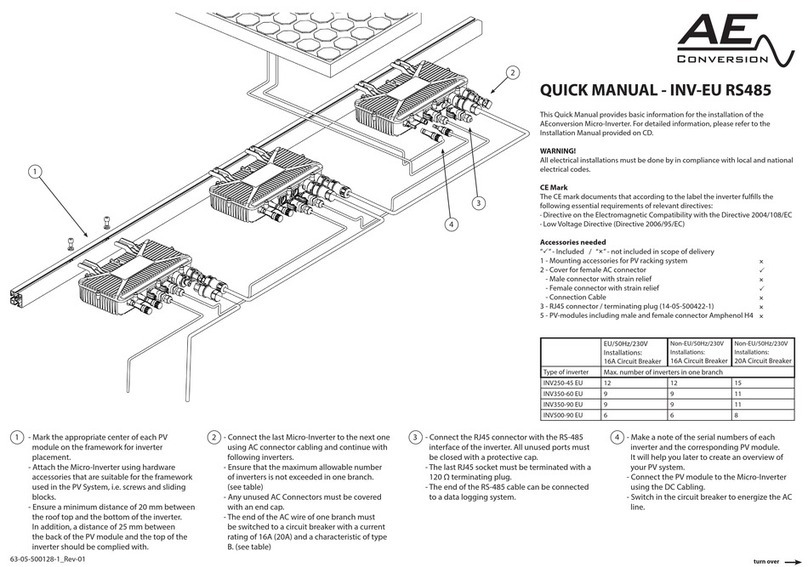
AE Conversion
AE Conversion INV-EU Series Installation guide
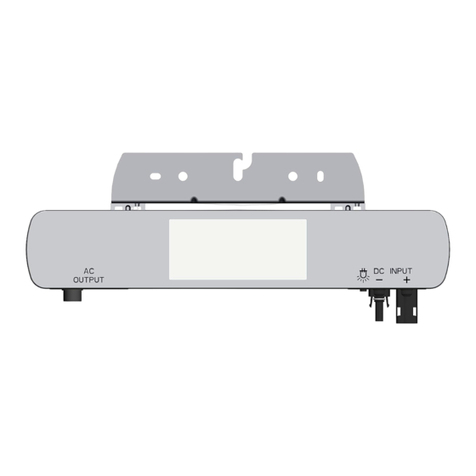
AE Conversion
AE Conversion INV315-50EU User manual

AE Conversion
AE Conversion INV250-45EU RS485 User manual
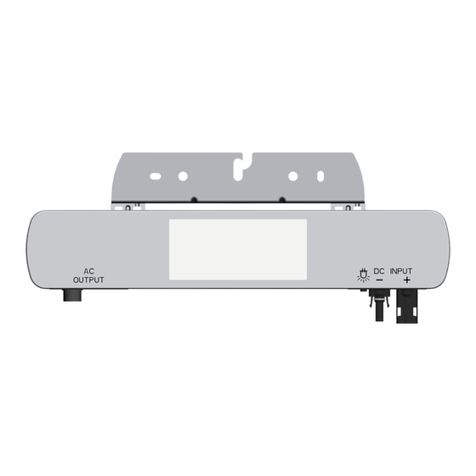
AE Conversion
AE Conversion INV315-50EU Installation guide
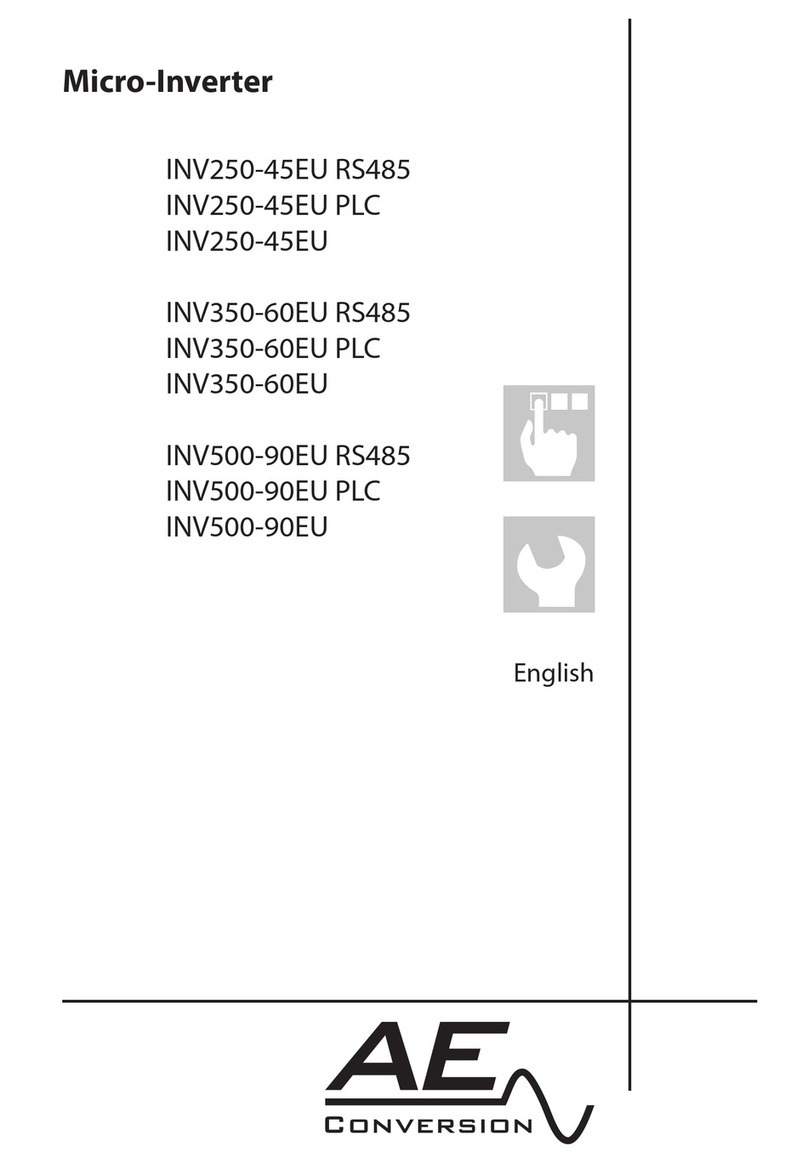
AE Conversion
AE Conversion INV250-45EU PLC User manual
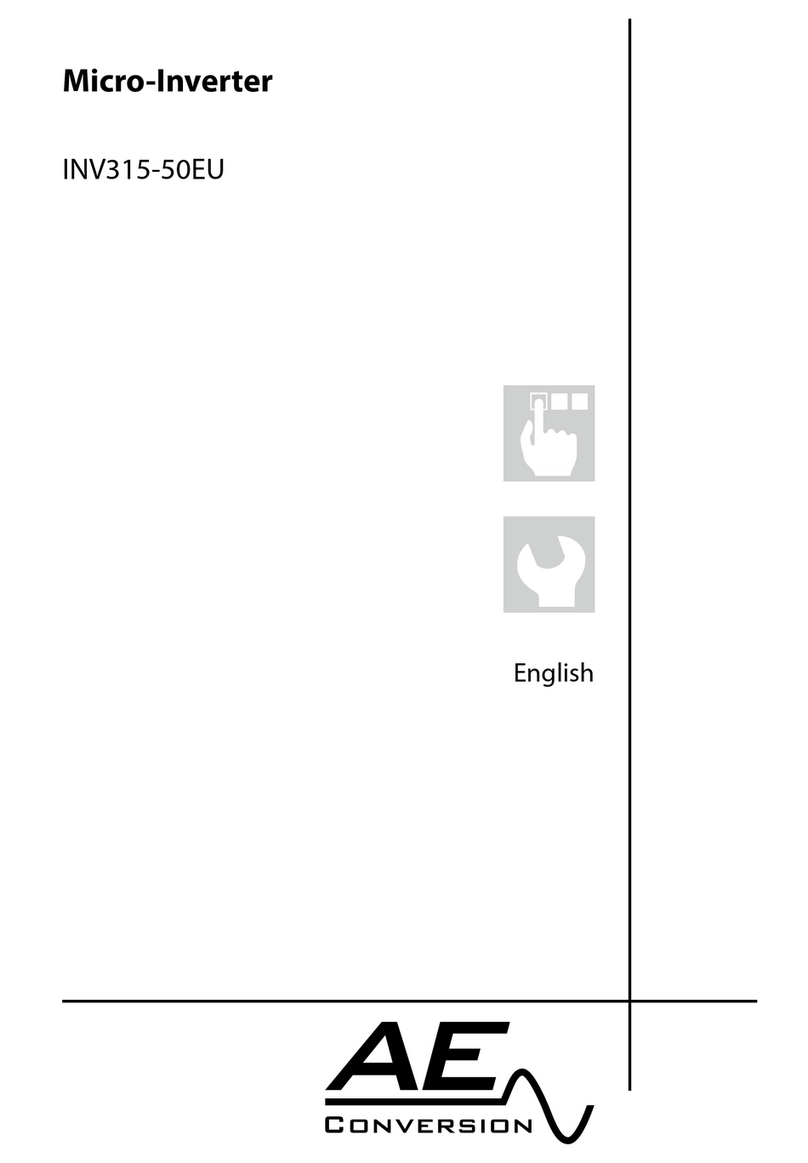
AE Conversion
AE Conversion INV315-50EU User manual
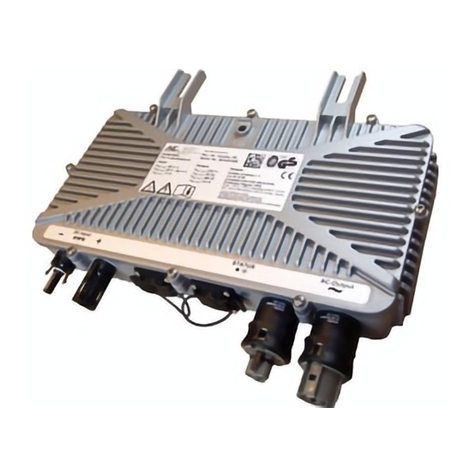
AE Conversion
AE Conversion PS350 User manual
